Skeletons are everywhere on Halloween. Here are some to chill you to the bone
The skeleton is the original Halloween monster. Also the scariest.
Unlike all the ghosts, vampires, and werewolves that kids impersonate on Oct. 31, it can't be dismissed as superstition. Skeletons exist. And we're them.
Underneath the fancy clothes and frail flesh, we're just skull and bones. And someday, that's all we'll be.
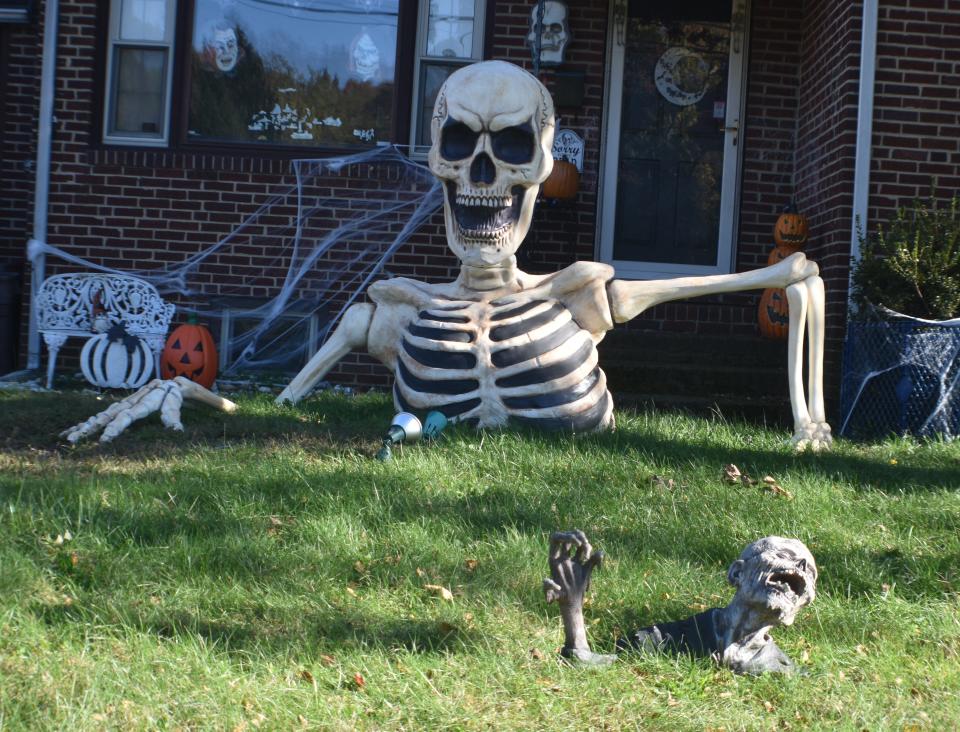
That's why we put skeletons in our front yard every Halloween. That's how the skeleton came to be, centuries ago, the very symbol of fear. Memento mori, the ancients called it. A reminder. Your turn will come.
Skulls and skeletons were a big motif in medieval art. They remain so to this day — and not just on Oct. 31. What would our movies, our music, our popular culture, be without skeletons?
Don't believe it? Let us help you bone up.
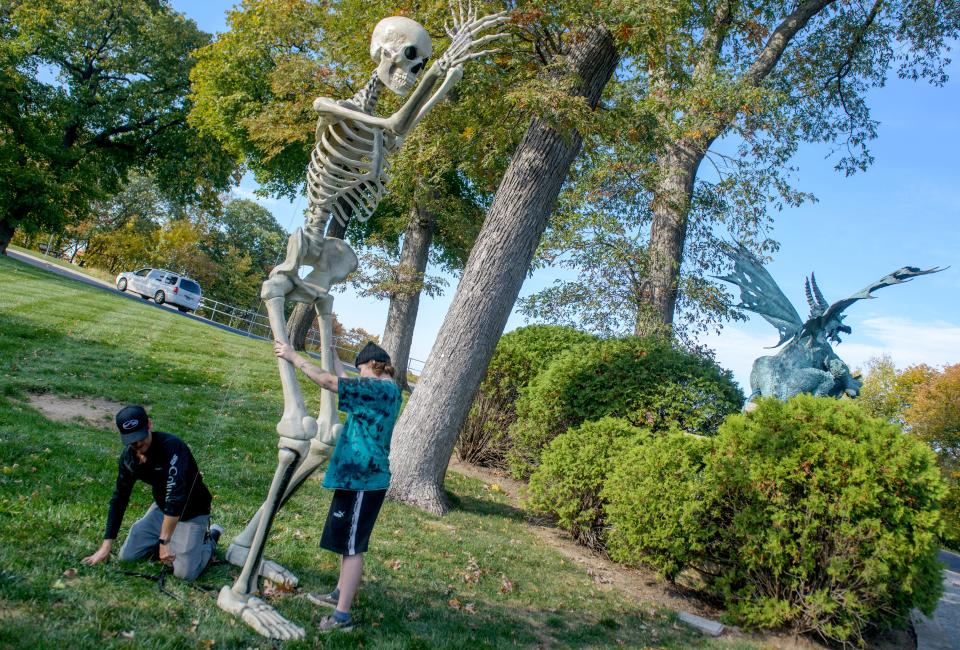
'Hamlet' (1600)
The skull is his favorite accessory. Invariably, he's depicted holding one. A very particular one, in fact— the skull of Yorick, the king's jester. A very funny fellow once, Hamlet says. Now look at him. Thus Shakespeare reminds us: Always catch an entertainer early in his career.
'The Jolly Roger' (circa 1725)
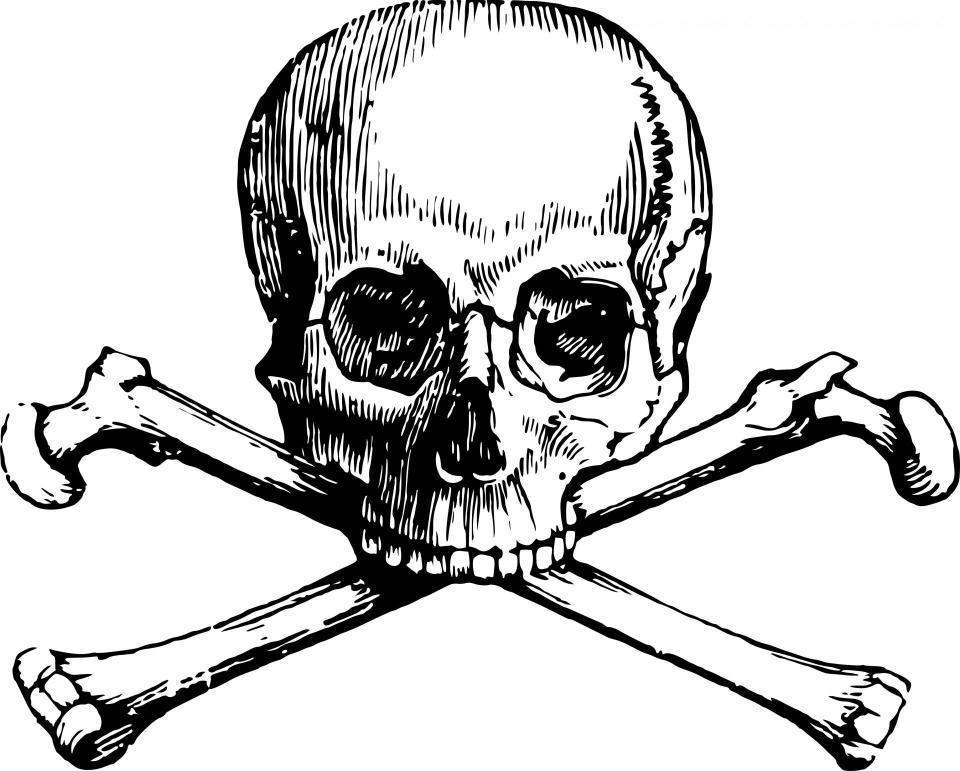
Who was Roger? Lost to history. But why he was jolly is clear enough. Like all skulls, he has a permanent grin. Maybe that's why "Black Sam" Bellamy, Edward England and (possibly) Blackbeard, among others, chose the skull and crossbones as their emblem. It was their sense of humor. Which must have had their fellow pirates yo-ho-hoing in the aisles.
'Danse Macabre' (1874)
The dead like to live it up. In medieval woodcuts, skeletons are often seen dancing. From these images, French composer Camille Saint-Saëns created his famous tone poem about a graveyard jamboree, complete with ghostly fiddler and rug-cutting skeletons (represented, in the orchestra, by a xylophone). The first audiences were appalled — but the piece became very popular afterwards, turning up everywhere from Jean Renoir's classic 1939 film "The Rules of the Game" to "Buffy the Vampire Slayer."
'Phantom of the Opera' (1925)
Today, we think of The Phantom of the Opera as a romantic fellow who sings Andrew Lloyd Webber tunes. But in the original Gaston Leroux novel and the classic silent film, the fiend who haunts the Paris Opera House is a living skull. Makeup genius Lon Chaney used wires to pull back his eyes, putty to distend his nostrils, and a mouthful of rotting false teeth. The "unmasking" scene," halfway through the movie, made 1925 audiences scream. Music enough for horror fans.
'The Dry Bones' (1928)

"Ankle bone connected to the leg bone, Leg bone connected to the knee bone..." We all know this fun little ditty. But actually it's not so fun. This gospel song, created by James Weldon Johnson ("Lift Every Voice and Sing") is actually a reference to Ezekiel 37:1–14, the "valley of the dry bones," that come to life at God's command. By the 1960s, the jaunty tune had become popular with folksingers, and was turning up on shows like "The Prisoner" and "The Munsters." Easy to forget what the song is about: skeletons coming back to life. Ewwwwww!
'Skeleton Dance' (1929)
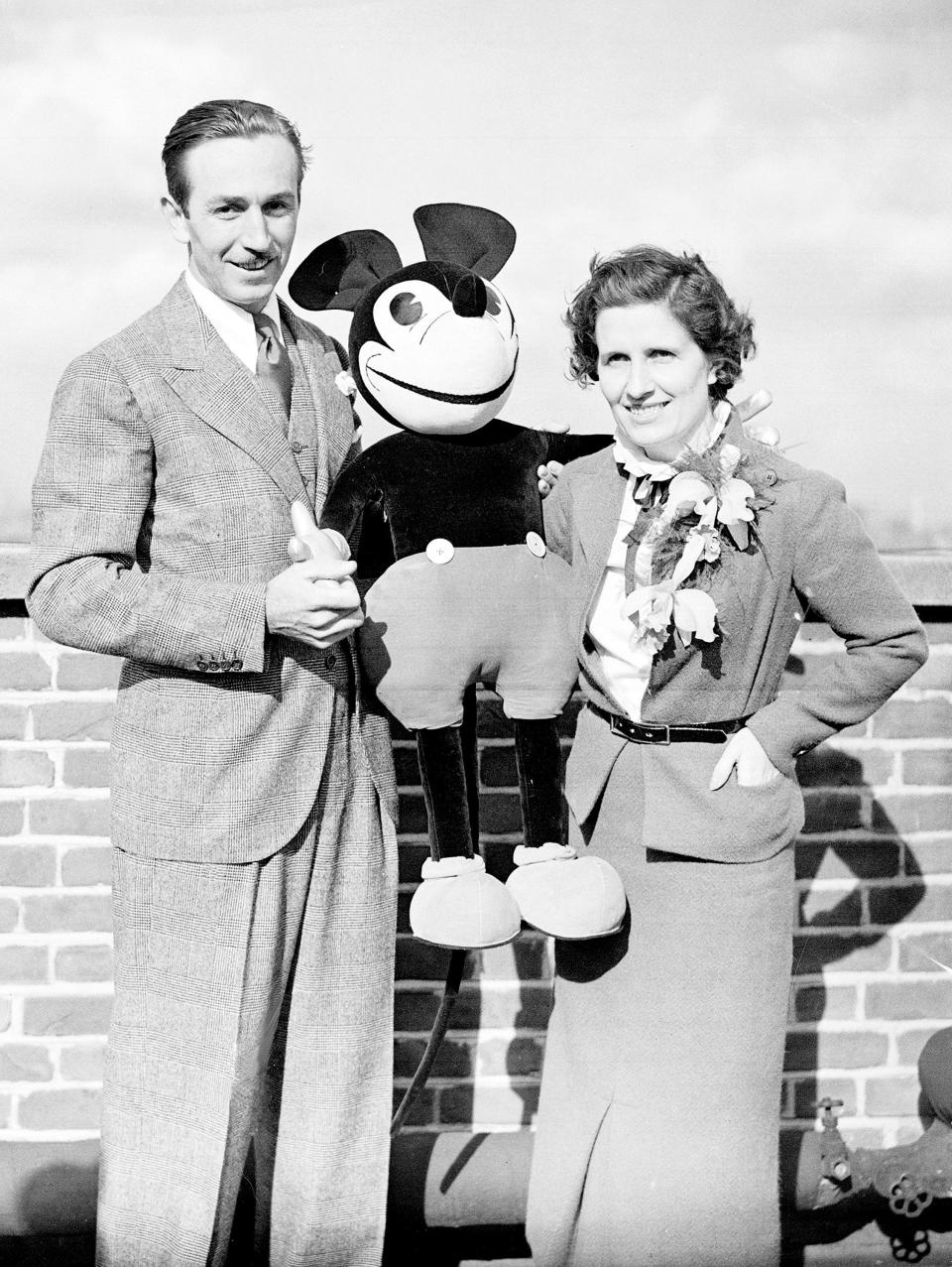
Mickey and Minnie weren't Walt Disney's only stars in the early days. Among his first big personalities were a quartet of rambunctious skeletons, whose graveyard frolic delighted audiences in 1929. This was edgy stuff back then: audiences loved it, but Variety felt compelled to warn "Don't bring the children." The film was banned in Denmark.
'Red Skull' (1941)
Skulls are bad enough. But a red skull — especially when it's attached to a living body — can only mean one thing. A supervillain! The original Red Skull, arch-enemy of Captain America in the wartime comic books created by Joe Simon and Jack Kirby, was a Nazi agent. Since then, he's gone through multiple incarnations in the Marvel universe, but always up to no good.
'The House on Haunted Hill' (1959)
"Emergo!" That was the gimmick with which schlockmeister William Castle advertised his B movie chiller "The House on Haunted Hill." And what was "Emergo?" It was a skeleton — cranked across the heads of the theater audience, clothesline-fashion, while an onscreen Vincent Price turned the handle. They don't make 'em like that any more.
'Jason and the Argonauts' (1963)
With the "stop motion" animation technique pioneered by Willis O'Brien ("King Kong") and perfected by Ray Harryhausen, anything from a giant ape to a sea serpent could come to life on screen. Many people think that Harryhausen's finest hour was the seven combative skeletons he brought to life in this mythological extravaganza about the Golden Fleece. True, the skeletons move a little jerkily. But how would you expect skeletons to move?
'Grateful Dead' (1966)

What's a morbid-sounding band with a morbid-looking logo? San Francisco artists Stanley Mouse and Alton Kelley were at a loss — until they happened on a rare 1913 edition of "The Rubaiyat," with an illustration by E.J. Sullivan of a skeleton surrounded by roses. That, according to a 2022 article in Rolling Stone, became the basis for the poster for the band's Sept. 1966 show at the Avalon Ballroom, and then for their 1971 album "Grateful Dead." It's been part of the band's iconography ever since.
'Ghost Rider' (1972)
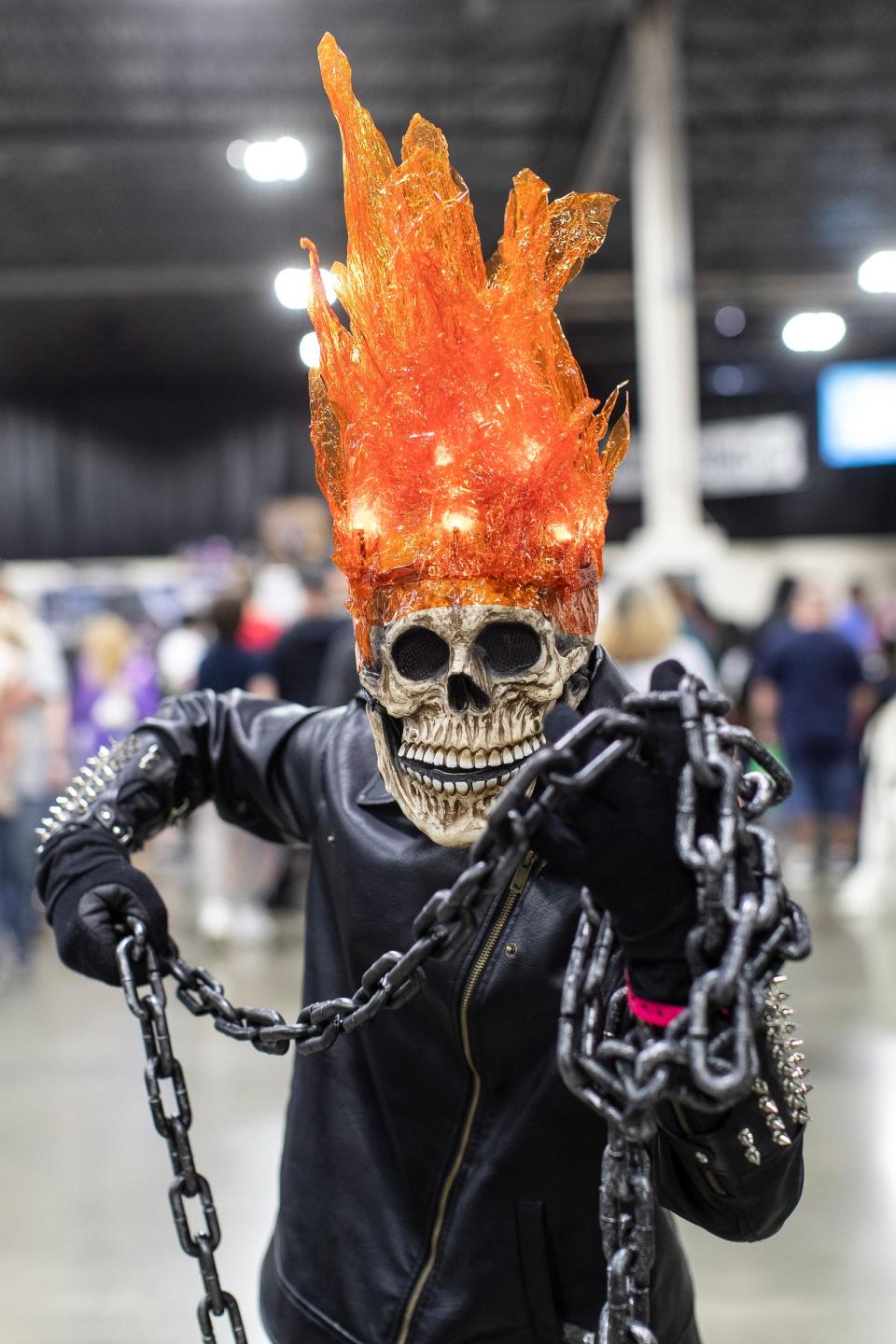
Riding a motorcycle is dicey. Riding a motorcycle when your head is a flaming skull is a major insurance risk. So far, none of the Marvel comic books, or the two movies culled from them (2007, 2011), have raised this important point.
'He-Man and Skeletor' (1982)

A skeleton with muscles could be called a contradiction in terms. But an action figure is an action figure — and so the main antagonist of Mattel's brawny He-Man, which made its debut in toy stores in 1982 and on TV the following year, is Skeletor, a strapping blue skeleton who wants to conquer Eternia and become Master of the Universe.
'The Nightmare Before Christmas' (1993)
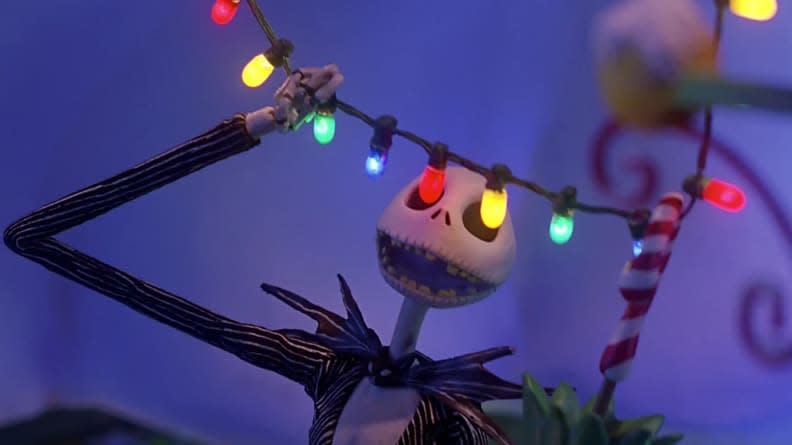
The character is Jack Skellington — not Jack Skeleton. Just as the TV character is Herman Munster, not Herman Monster. Blame assimilation. Sadly, like so many Americans, these non-humans felt the need to change their name. As if it mattered. We all know what the hero of "The Nightmare Before Christmas" really is, right? Not a skellington, but a...
This article originally appeared on NorthJersey.com: Halloween skeletons: Scary movies that chill you to the bone

